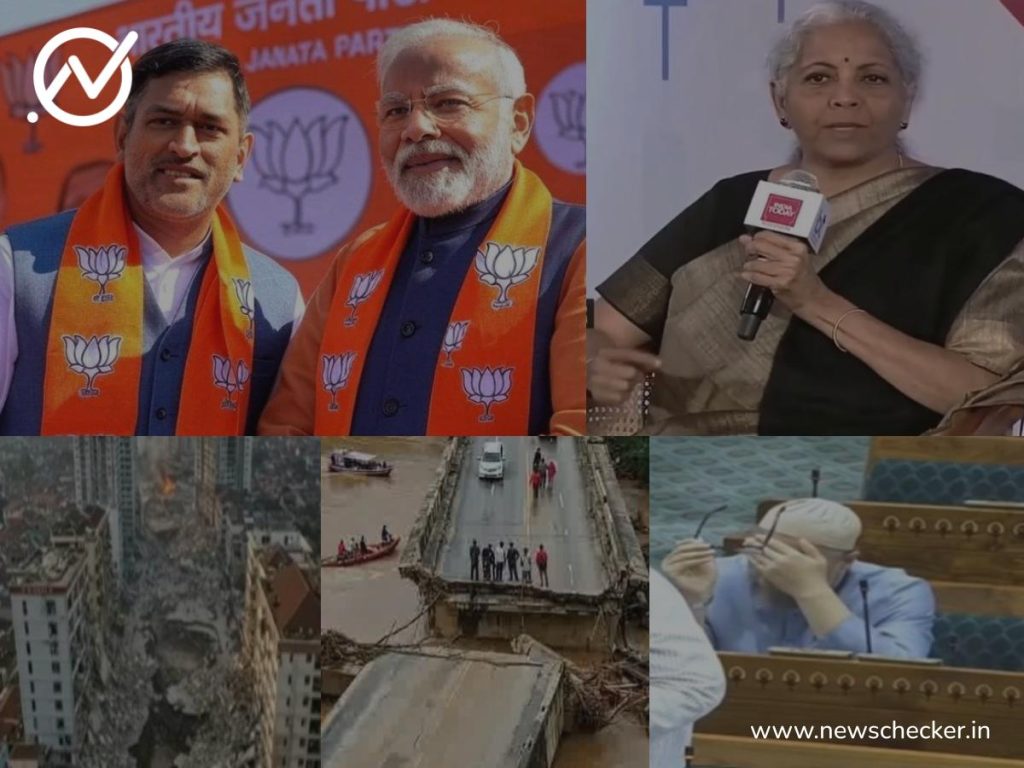The Rise of Misinformation: Debunking Viral Claims and Deepfakes
In today’s digital age, the rapid spread of misinformation poses a significant threat to the integrity of information and public discourse. The past week has witnessed a surge in fabricated news and manipulated media, highlighting the need for critical evaluation of information encountered online. From false claims about arrests in communal violence to AI-generated images and videos, the proliferation of misinformation has become a growing concern. This article delves into several prominent examples of misinformation circulating online, shedding light on the deceptive tactics employed and the importance of fact-checking in navigating the digital landscape.
Malda Violence: Exposing False Narratives of Selective Arrests
Recent clashes in Malda’s Mothabari have become a breeding ground for misinformation, with claims circulating that West Bengal Police targeted only Hindus in arrests following the violence. This narrative, propagated primarily by the Bengal BJP, attempts to paint a biased picture of law enforcement’s response to the situation. Fact-checking investigations, however, reveal the falsity of these claims. The propagation of such misinformation not only exacerbates existing tensions but also undermines public trust in law enforcement. The incident emphasizes the importance of verified information and responsible reporting in sensitive communal situations.
MS Dhoni and the BJP: Unmasking the AI-Generated Image
A manipulated image of cricketer MS Dhoni alongside Prime Minister Narendra Modi, sporting a saffron scarf with the BJP lotus symbol, recently went viral. The image, falsely implying Dhoni’s affiliation with the BJP, showcases the growing sophistication of AI-generated content and its potential for misuse. While AI technology holds immense promise, its ability to create realistic yet fabricated images poses a significant threat to the credibility of visual information. The incident underscores the necessity of scrutinizing online content and utilizing fact-checking resources to differentiate between authentic images and AI manipulations.
Waqf Amendment Bill: Old Video Resurfaces with False Context
A video falsely depicting AIMIM Chief Asaduddin Owaisi crying in Parliament over the Waqf Amendment Bill has been circulating on social media. The video, taken out of context from a previous parliamentary session, exemplifies the deceptive tactic of repurposing old content to create false narratives. Such manipulations exploit existing emotional sensitivities and can lead to misinformation spreading rapidly, especially in politically charged environments. The incident serves as a reminder to verify the context and source of videos before accepting their authenticity.
Deepfake Technology: Nirmala Sitharaman and the Dubious Investment Project
A deepfake video purportedly showing Finance Minister Nirmala Sitharaman endorsing a dubious investment platform illustrates the escalating threat of deepfake technology. The fabricated video, featuring a manipulated likeness of Sitharaman in a "TimesNow" news report, highlights the potential for deepfakes to damage reputations and spread misinformation. The sophistication of deepfake technology makes it increasingly difficult to distinguish between genuine and fabricated videos, underscoring the urgent need for advanced detection tools and public awareness campaigns.
Earthquake in Myanmar: AI-Generated Devastation
A viral video claiming to show the aftermath of the earthquake in Myanmar demonstrates the manipulative potential of AI-generated videos in disaster contexts. The video, featuring scenes of widespread destruction, was fabricated using AI technology. While the earthquake did cause significant damage, the viral video exaggerates the extent of the devastation, potentially hindering relief efforts and spreading unnecessary panic. The incident highlights the ethical implications of using AI to create disaster-related content and the importance of verifying information from reliable sources.
Combating the Misinformation Epidemic: A Collective Responsibility
The prevalence of misinformation in the digital age necessitates a multi-pronged approach to combat its spread. Individuals, media organizations, and tech companies all have a role to play in promoting media literacy and developing effective fact-checking mechanisms. Educating the public about the dangers of misinformation and providing them with the tools to identify and debunk false claims are crucial steps in mitigating its impact. Furthermore, social media platforms must take responsibility for preventing the spread of misinformation on their platforms, implementing robust verification processes and promptly removing misleading content. The fight against misinformation is a collective endeavor that requires a sustained commitment to fostering a more informed and responsible digital environment.


